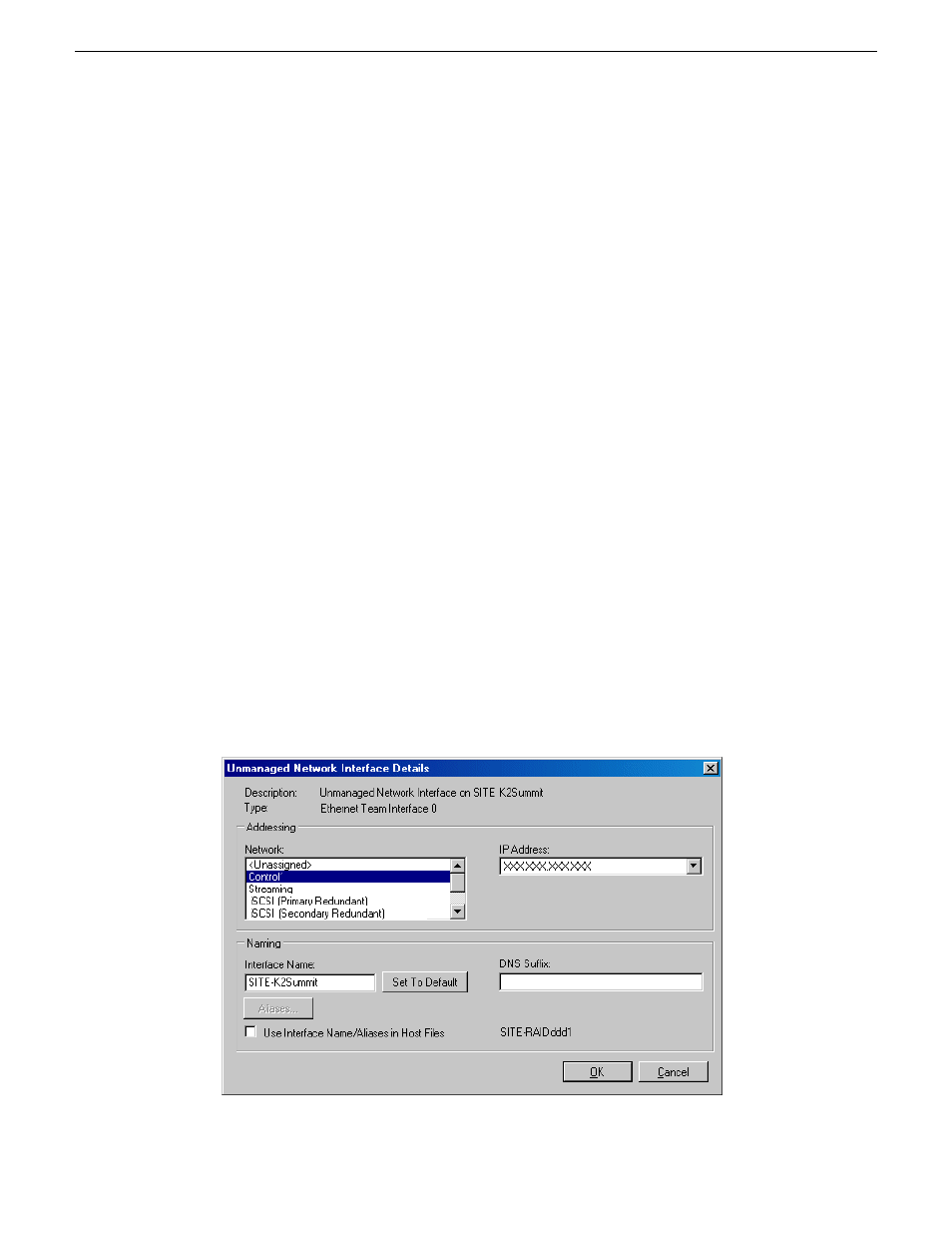Modifying an unassigned (unmanaged) interface – Grass Valley SiteConfig v.2.1 User Manual
Page 58

9. After configuring control network settings, do the following
a) If a message informs you of a possible loss of communication, click
OK
.
This message is normal, since this is the network over which you are currently communicating.
b) In the Device list view, observe the device icon and wait until the icon displays the green star
overlay before proceeding.
The icon might not display the green star overlay for several seconds as settings are
reconfigured and communication is re-established.
c) In the Interface list view, right-click the interface and select
Ping
.
The Ping Host dialog box opens.
If ping status reports success, the interface is communicating on the control network.
Related Links
About IP configuration of network interfaces on devices
on page 52
Modifying an unassigned (unmanaged) interface
Prerequisites for this task are as follows:
•
The system description has one or more placeholder devices.
•
The placeholder device has a one or more unmanaged network interfaces.
1. In the
Network Configuration | Devices
tree view, select a placeholder device.
The interfaces for that device are displayed in the interfaces list view.
2. In the interfaces list view, right-click an interface and select
Edit
.
The Unmanaged Network Interface Details dialog box opens.
58
SiteConfig 2.1 User Manual
11 October 2011
Working with network configuration
